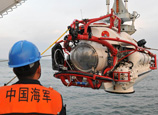
The United States and the European Union have adopted the policy of quantitative easing, and kept their money-printing machines running around the clock over the past few years. This has increased the imported inflationary pressure facing China, and reduced the value of its huge foreign exchange reserves.
Printing more money to shift debt burden
"The United States and the European Union have adopted the policy of quantitative easing in order to solve their own economic problems," said Xu Hongcai, deputy director of the Information Department under China Center for International Economic Exchanges. The United States wants to boost employment because it involves the support of voters and domestic political stability. The European Union has had a hard time since the debt crisis erupted, and has thus adopted a loose monetary policy to promote economic growth and to solve social contradictions.
The United States has kept printing more money also to shift its debt burden. Xu said that the debt-ridden country has barely resolved the "fiscal cliff" problem lately through debt monetization, instead of through reducing expenditure and increasing taxes on the wealthy. In other words, it has shifted its debt burden onto other countries through money printing and inflation.
Printing excessive amounts of the U.S. dollar and euro, two international reserve currencies, are bound to exert negative effects on other countries. Xu said that massive money printing may increase inflation risks as well as the prices of dollar-priced international bulk commodities. In fact, international bulk commodity prices have risen in recent months, causing imported inflation in other countries. The money printed by the United States and European Union may pour into emerging economies, hit their financial systems, cause exchange rate fluctuations, and increase the risk of financial regulation.

Read the Chinese version: 中国应防美欧印钞“剪羊毛”














 Girl wearing "military uniform" parade on the street to publicize the new traffic regulation
Girl wearing "military uniform" parade on the street to publicize the new traffic regulation


![]()
